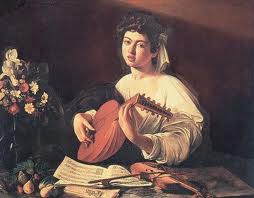June 2, 2014.Schumann and Arcadelt.Robert Schumann was born on June 8th, 1810 in Zwickau, Saxony.We write about him every year, as Schumann remains one of the most important composers in the history of Western music.Last year we wrote about his gift as a songwriter.He wrote fours symphonies and quite a bit of chamber music.Still, he was first and foremost a piano composer.Starting with opus 1, Variations on the name "Abegg," written in 1830, for the following nine years this was the only instrument he wrote for.And it’s for the piano that he wrote his greatest compositions.One of them is Kreisleriana, Op. 16, written in 1838.That was a difficult but at the same time tremendously productive period in Schumann’s life.Robert was carrying on a romantic relationship with Clara Wieck, a daughter of his former piano teacher and a piano prodigy.Robert’s infatuation with Clara dated to 1835, when she was just 15.When Clara reached 18, he formally proposed to her.Wieck-senior refused to consent, as he considered a mere composer not capable of providing for his daughter. They would marry only in 1840.In the mean time Schumann was writing some of his most interesting work: Fantasiestücke, Symphonic Etudes, Fantasie in C major, and Kreisleriana.Many of Schumann’s compositions are based on, or at least have an allusion to, literary sources, and so does Kreisleriana.“Kreisler” in the title is Johannes Kreisler, the protagonist of a novel by the German writer E.T.A. Hoffmann, an eccentric composer of genius (Kreisler appeared in several other Hoffmann novels, including the great The Life and Opinions of the Tomcat Murr).Schumann called Kreisleriana a fantasy for piano and dedicated it to Frédéric Chopin.It consists of eight movements, each in a different mood, like the temperamental, and probably manic-depressive, Kreisler – and of course Schumann himself.In our library we have Kreisleriana in the performances by two young pianists, the German/Russian Elena Melnikova and the Chinese/American Jenny Q Chai.This time we’d like to play it in the performance of a wonderful interpreter of the music of Schumann, the Georgian pianist Eliso Virsaladze.This recording was made in 1965 when Eliso was 23 years old.One year later she received the first prize at the Schumann Competition in Zwickau.These days Ms. Virsaladze is still active as a professor at the Moscow Conservatory.You can listen to it here.
From a composer who was popular for the last century and a half, and still is, we’d turn to a composer who was also very popular during his lifetime, except that he was practically forgotten for the last three hundred years – Jacob (or Jacques) Arcadelt.Arcadelt was born around 1507.This makes him a contemporary of the English composer Thomas Tallis, the Spaniard Cristóbal de Morales, and another Franco-Flemish composer, Jacob Clemens non Papa.Born in what is now Belgium, he moved to Italy as a young man.He sung in the choir of the St.-Peter’s Basilica and later in the Sistine Chapel, where he worked from about 1530 to 1551.There he met Michelangelo, who was then painting the Last Judgment.Arcadelt, at the time a very popular composer of madrigals, set two poems by Michelangelo to music.Apparently Michelangelo wasn’t impressed.Arcadelt’s music stayed popular even after his death in 1568: in Caravaggio’s Lute Player, painted in 1600, the sheet music is by Arcadelt!(The androgynous singer is probably a castrato).Arcadelt wrote several hundred madrigals and chansons, and also wrote church music – several masses and motets.But it was the “sweet style” of his madrigals that he was famous for.Here’s his chanson Robin Par Bois Et Compagnes ("Robin As He Goes Through The Woods And The Fields") set to a poem by the famous French poet Pierre de Ronsard.It’s performed by the Egidius Kwartet.And here is his madrigal Il bianco e dolce cigno, sung by the Hilliard Ensemble.
Schumann and Arcadelt, 2014
June 2, 2014. Schumann and Arcadelt. Robert Schumann was born on June 8th, 1810 in Zwickau, Saxony. We write about him every year, as Schumann remains one of the most important composers in the history of Western music. Last year we wrote about his gift as a songwriter. He wrote fours symphonies and quite a bit of chamber music. Still, he was first and foremost a piano composer. Starting with opus 1, Variations on the name "Abegg," written in 1830, for the following nine years this was the only instrument he wrote for. And it’s for the piano that he wrote his greatest compositions. One of them is Kreisleriana, Op. 16, written in 1838. That was a difficult but at the same time tremendously productive period in Schumann’s life. Robert was carrying on a romantic relationship with Clara Wieck, a daughter of his former piano teacher and a piano prodigy. Robert’s infatuation with Clara dated to 1835, when she was just 15. When Clara reached 18, he formally proposed to her. Wieck-senior refused to consent, as he considered a mere composer not capable of providing for his daughter. They would marry only in 1840. In the mean time Schumann was writing some of his most interesting work: Fantasiestücke, Symphonic Etudes, Fantasie in C major, and Kreisleriana. Many of Schumann’s compositions are based on, or at least have an allusion to, literary sources, and so does Kreisleriana. “Kreisler” in the title is Johannes Kreisler, the protagonist of a novel by the German writer E.T.A. Hoffmann, an eccentric composer of genius (Kreisler appeared in several other Hoffmann novels, including the great The Life and Opinions of the Tomcat Murr). Schumann called Kreisleriana a fantasy for piano and dedicated it to Frédéric Chopin. It consists of eight movements, each in a different mood, like the temperamental, and probably manic-depressive, Kreisler – and of course Schumann himself. In our library we have Kreisleriana in the performances by two young pianists, the German/Russian Elena Melnikova and the Chinese/American Jenny Q Chai. This time we’d like to play it in the performance of a wonderful interpreter of the music of Schumann, the Georgian pianist Eliso Virsaladze. This recording was made in 1965 when Eliso was 23 years old. One year later she received the first prize at the Schumann Competition in Zwickau. These days Ms. Virsaladze is still active as a professor at the Moscow Conservatory. You can listen to it here.
and foremost a piano composer. Starting with opus 1, Variations on the name "Abegg," written in 1830, for the following nine years this was the only instrument he wrote for. And it’s for the piano that he wrote his greatest compositions. One of them is Kreisleriana, Op. 16, written in 1838. That was a difficult but at the same time tremendously productive period in Schumann’s life. Robert was carrying on a romantic relationship with Clara Wieck, a daughter of his former piano teacher and a piano prodigy. Robert’s infatuation with Clara dated to 1835, when she was just 15. When Clara reached 18, he formally proposed to her. Wieck-senior refused to consent, as he considered a mere composer not capable of providing for his daughter. They would marry only in 1840. In the mean time Schumann was writing some of his most interesting work: Fantasiestücke, Symphonic Etudes, Fantasie in C major, and Kreisleriana. Many of Schumann’s compositions are based on, or at least have an allusion to, literary sources, and so does Kreisleriana. “Kreisler” in the title is Johannes Kreisler, the protagonist of a novel by the German writer E.T.A. Hoffmann, an eccentric composer of genius (Kreisler appeared in several other Hoffmann novels, including the great The Life and Opinions of the Tomcat Murr). Schumann called Kreisleriana a fantasy for piano and dedicated it to Frédéric Chopin. It consists of eight movements, each in a different mood, like the temperamental, and probably manic-depressive, Kreisler – and of course Schumann himself. In our library we have Kreisleriana in the performances by two young pianists, the German/Russian Elena Melnikova and the Chinese/American Jenny Q Chai. This time we’d like to play it in the performance of a wonderful interpreter of the music of Schumann, the Georgian pianist Eliso Virsaladze. This recording was made in 1965 when Eliso was 23 years old. One year later she received the first prize at the Schumann Competition in Zwickau. These days Ms. Virsaladze is still active as a professor at the Moscow Conservatory. You can listen to it here.
From a composer who was popular for the last century and a half, and still is, we’d turn to a composer who was also very popular during his lifetime, except that he was practically forgotten for the last three hundred years – Jacob (or Jacques) Arcadelt. Arcadelt was born around 1507. This makes him a contemporary of the English composer Thomas Tallis, the Spaniard Cristóbal de Morales, and another Franco-Flemish composer, Jacob Clemens non Papa. Born in what is now Belgium, he moved to Italy as a young man. He sung in the choir of the St.-Peter’s Basilica and later in the Sistine Chapel, where he worked from about 1530 to 1551. There he met Michelangelo, who was then painting the Last Judgment. Arcadelt, at the time a very popular composer of madrigals, set two poems by Michelangelo to music. Apparently Michelangelo wasn’t impressed. Arcadelt’s music stayed popular even after his death in 1568: in Caravaggio’s Lute Player, painted in 1600, the sheet music is by Arcadelt! (The androgynous singer is probably a castrato). Arcadelt wrote several hundred madrigals and chansons, and also wrote church music – several masses and motets. But it was the “sweet style” of his madrigals that he was famous for. Here’s his chanson Robin Par Bois Et Compagnes ("Robin As He Goes Through The Woods And The Fields") set to a poem by the famous French poet Pierre de Ronsard. It’s performed by the Egidius Kwartet. And here is his madrigal Il bianco e dolce cigno, sung by the Hilliard Ensemble.
Sistine Chapel, where he worked from about 1530 to 1551. There he met Michelangelo, who was then painting the Last Judgment. Arcadelt, at the time a very popular composer of madrigals, set two poems by Michelangelo to music. Apparently Michelangelo wasn’t impressed. Arcadelt’s music stayed popular even after his death in 1568: in Caravaggio’s Lute Player, painted in 1600, the sheet music is by Arcadelt! (The androgynous singer is probably a castrato). Arcadelt wrote several hundred madrigals and chansons, and also wrote church music – several masses and motets. But it was the “sweet style” of his madrigals that he was famous for. Here’s his chanson Robin Par Bois Et Compagnes ("Robin As He Goes Through The Woods And The Fields") set to a poem by the famous French poet Pierre de Ronsard. It’s performed by the Egidius Kwartet. And here is his madrigal Il bianco e dolce cigno, sung by the Hilliard Ensemble.